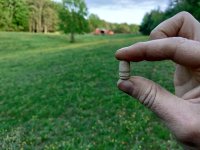truckinbutch
Silver Member
How many of you know why this tree got this name ?
How many of you have had to help dig a grave in a family plot and then come back after the graveside service and complete the burial ?
How many of you have had to help dig a grave in a family plot and then come back after the graveside service and complete the burial ?






